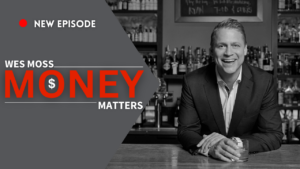Our President Elect Donald J. Trump Was The Fourth Quarter Headline
The S&P 500 notched a sluggish start to the quarter, falling a little over 1% as investors feared November, 8th. Then came Election night. As it became evident Mr. Trump would become our 45th president, the S&P plunged 5% in the wee hours of the morning. However, as it’s prone to do, the market quickly changed its mind to finish the day up 1%. The uptrend has continued to-date with equities rising steadily as investors price in the new administration’s pro-growth tilt. What do we mean by this? For the equity markets, it primarily comes down to two things—lower tax rates and less regulations. Both are positive for corporate profits, which ultimately drive equity market valuation.
The downside to the rapid rise in equities and the belief in a stronger economy? Higher interest rates and, thus, lower bond prices. In fact, November marked the worst month for bonds in 12 years! Some context is needed here, however. The aggregate bond index fell 2.4%. The S&P’s worst monthly performance in 12 years? Down 16.9% in October of 2008. The worst in 2016? Down 5.0%. We point out these performance metrics to highlight our belief bonds are to be owned for consistent income and to dampen portfolio volatility. We’d argue that the current post-election upheaval is a perfect illustration of why you should own bonds as a part of a diversified portfolio.
The US Economy Is Healthy And Confidence Levels Point To A Stronger 2017
We remain impressed by the resiliency of this economic expansion, currently the fourth-longest on record. GDP growth strengthened throughout 2016 and is forecast to end the year at a healthy 3% clip. Job growth remains consistent and wages are finally starting to significantly rise (currently at the highest levels since the Great Recession) giving consumers more purchasing power. The housing market also looks to be on firm footing with higher home prices, prudent lending standards and rational levels of supply despite near record builder confidence levels.
The better news may be evident in December’s sentiment data, which point to strong 2017 growth. Consumer confidence hit a 13 year high, small business confidence hit a 12 year high and CEO confidence hit a 6 year high. We understand that these numbers may look inconsequential on paper, but they tend to lead to higher consumer spending and business investment—perhaps the two most important inputs for economic growth.
What’s Next? Much Will Depend On The New Administration’s Policy
While 2016’s solid 10% gain for the S&P 500 was welcome after a flat 2015, the question now becomes: where do we go from here? The short answer is we don’t know how the markets will trade. Nobody does. We’ve instead identified 7 economic themes for 2017 that we think will shape the economy and therefore the markets. Most themes center on policy changes, so we’ll be watching closely to see how things evolve from campaign rhetoric to implementable laws.
What we do know regarding the market is a smooth ride should not be expected. Consider this for a moment, the S&P 500 has been down at some point in every year but two since 1980. In fact, the average intra-year decline has been 14.2%. Despite these significant drawdowns seen year in and year out, the market has generated 13% annual gains. We remain steadfast in our belief that a well-constructed diversified portfolio will help weather these inevitable storms and allow for level-headed decisions in times of stress.
As always, we’re here to help and will be in touch during what should be an eventful 2017!
Regards,
The Investment Committee
Disclosure: This information is provided to you as a resource for informational purposes only. It is being presented without consideration of the investment objectives, risk tolerance or financial circumstances of any specific investor and might not be suitable for all investors. Past performance is not indicative of future results. Investing involves risk including the possible loss of principal. This information is not intended to, and should not, form a primary basis for any investment decision that you may make. Always consult your own legal, tax or investment advisor before making any investment/tax/estate/financial planning considerations or decisions.








